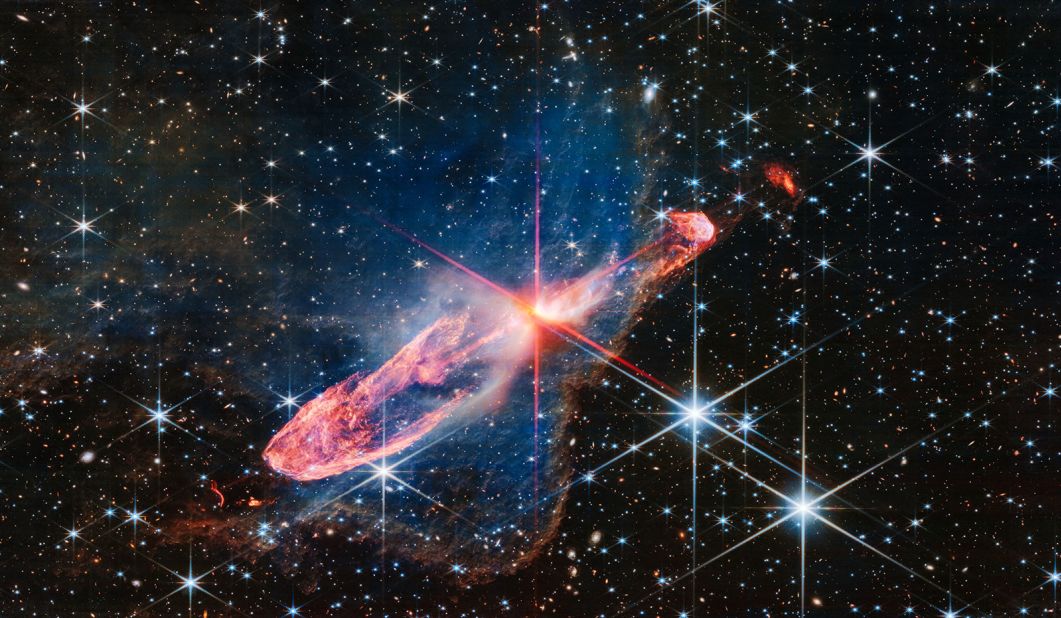NGC 346 is the brightest and largest star-forming region in the Small Magellanic Cloud, but it is also about 210,000 light-years away. But thanks to the James Webb Space Telescope, you can view it right here on your device.
The European Space Agency (ESA) on Tuesday shared this image of NGC 346 and its fledgeling stars forming taken by Webb’s Mid-Infrared Instrument (MIRI). The Small Magellanic Cloud (SMC) is a satellite galaxy of our own, the Milky Way. It is also considered more “primitive” than the Milky Way because it contains less heavy elements. Heavy elements are typically forged in stars through nuclear fusion and supernova explosions.
Cosmic dust is mostly formed of heavier elements like silicon and oxygen. Because of this, scientists did not expect SMC to have significant amounts of dust. But this MIRI Image shows a lot of dust within the region, just like another image of NGC 346 captured by Webb’s Near-Infrared camera in January.
In the image that you can see above, the blue tendrils are trace emissions from materials like dusty silicates and “sooty” chemical molecules known as polycyclic aromatic hydrocarbons, or PAHs. The diffused red light that you can see is warm dust heated by the brightest and most massive stars in the region. There is an arc of light at the centre left—this could be a reflection of light from the star near the centre of the arc.
By combining Webb data in multiple wavelengths, scientists can take a better “census” of the stars and protostars (early stage of the formation of a star) in this region. What we learn from this part of SMC will help astronomers understand galaxies that existed billions of years ago, during an age known as the “cosmic noon.” Star formation was at its peak during the cosmic noon and also, heavy element concentrations were lower, as we can observe in the SMC.
Source: indianexpress.









